Good day, friends! It's the middle of the month again. Oh, how time flies so fast! I hope you are doing fine. Whatever challenges you may be struggling with right now will all be a part of the past of your much stronger and braver future self. So hang in there and carry on!

(image source: Katsanslimites)
One of the gorgeous flowers at the Bell Amphitheater.
Anyway, I am already done with my Mines View Park blog post. This time, I will be sharing to you another favorite destination in Baguio City—Camp John Hay's Historical Core.
CAMP JOHN HAY
John Hay Air Station or Camp John Hay was built way back 1903 as a recreational area for the U.S. Military which was then bombed by the Japanese during World War II. The Japanese forces succeeded to seize the area and eventually became the headquarters of General Tomoyuki Yamashita. Later on after the war, the Americans had won Camp John Hay back to their hands. The Americans then entrusted Camp John Hay to the Philippine government last July 1, 1991.
Camp John Hay was named after John Milton Hay, President Theodore Roosevelt's Secretary of State.
Today, Camp John Hay is known as a tourist spot for its historical value, activities, attractions, and housing some of the most popular hotels and golf course in the Philippines. It also has a shopping center where you can shop on your favorite popular foreign brands or eat at the fancy restaurants.
HOW TO GET HERE
From The Mansion, my mom and I rode a taxi to Camp John Hay. If you are not familiar with the streets in Baguio City, better take a taxi rather than a jeepney. The fare might cost more but you'll save yourselves from stress. You'll arrive in a shorter time too.
Travel time from The Mansion to Camp John Hay is more or less 15 minutes. I can't remember how much our taxi fare was. But I'm pretty sure it didn't cost more than a hundred peso. There are different gates or roads that would lead you to Camp John Hay. So most likely, the taxi driver would lead you through the nearest one to your destination.
CAMP JOHN HAY'S HISTORICAL CORE
Camp John Hay has a vast land area which means lots of activities you can enjoy. You can shop, eat at restaurants, mingle with the butterflies at the Butterfly Sanctuary, ride a horse around the area, try ziplining at the Tree Top Adventure, play golf, go back in history at Historical Core, and many more.
For our short trip at Camp John Hay, I told my mom that we visit the Historical Core since it's one of the most visited areas by the tourists going to Camp John Hay. We were almost lost finding the Historical Core because it's located on top of a hill. After a few walks passing through a bazaar (with no customers, just the sellers keeping themselves busy), we were able to find the entrance to Historical Core. And I would say there were very few visitors that time. You would rarely meet other tourists which makes you feel like you are alone.
Inside the Historical Core are the Cemetery of Negativism, History Trail, Bell Amphitheater, Bell House, and the Totem Pole.
(video source: Lakbay Baguio via Youtube)
Around Historical Core.
Entrance fee costs Php 60 while students and senior citizens can avail a 50% discount. My mom was able to avail the discount while I paid a regular fee. Funny that the staff asked if I'm still a student and even insisted that I still look like one. (Lol.) I could've said yes the first time the staff asked but I'm afraid they would ask for an I.D. as proof. (Haha!)
CEMETERY OF NEGATIVISM
Seeing the word "cemetery" may probably take you aback. Doesn't that sound scary, creepy and eerie? And a cemetery inside Camp John Hay? Hey!!!
Well, hearing the word Cemetery of Negativism or Lost Cemetery did initially gave me an eerie impression, but seeing the graves personally gave me some chuckle and smile to most of them instead.
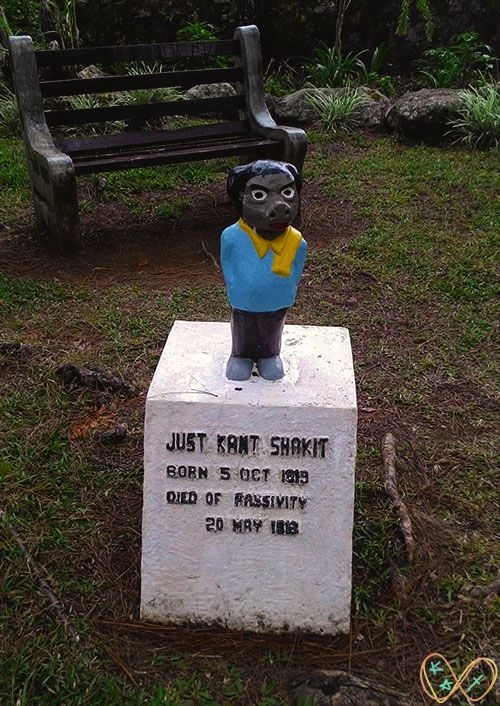
(image source: Katsanslimites)
One of the graves at the Cemetery of Negativism.
I love how creative this idea was; how they played with the names, how or when they were born, and their cause of death. It's a cemetery but it made me laugh reading each grave. (I feel so disrespectful. Lol.) But it's all good because no dead bodies of humans nor pets were buried under this cemetery.
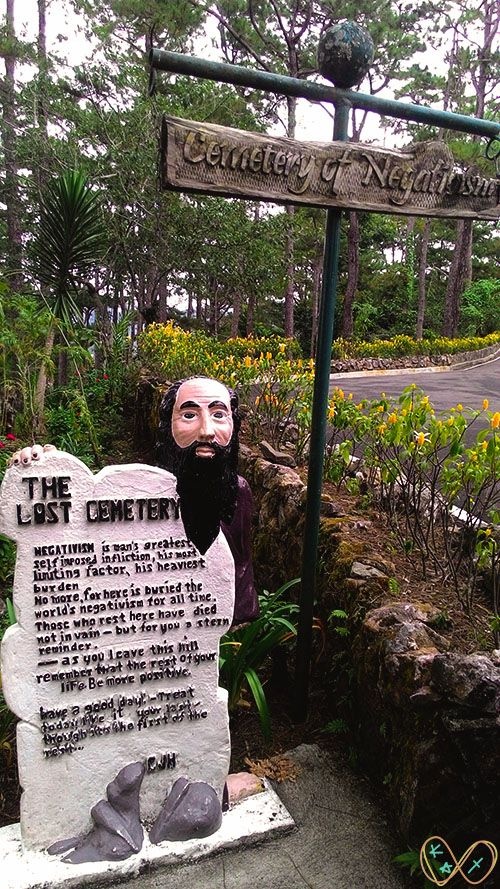
(image source: Katsanslimites)
Entrance to Cemetery of Negativism.
NEGATIVISM is man's greatest self-imposed infliction, his most limiting factor, his heaviest burden. No more, for here is buried the world's negativism for all time. Those who rest here have died not in vain—but for you a stern reminder.
The Cemetery of Negativism was made to help the visitors reflect on themselves and remind them to stop being a pessimist and just remain positive all the time. It's nice that they've put graves as a symbol of negativity because that's what we should do about it. Bury it, leave it, and forget it.
Visiting this cemetery will surely make you come out smiling and filled with more positivity.
TOTEM POLE
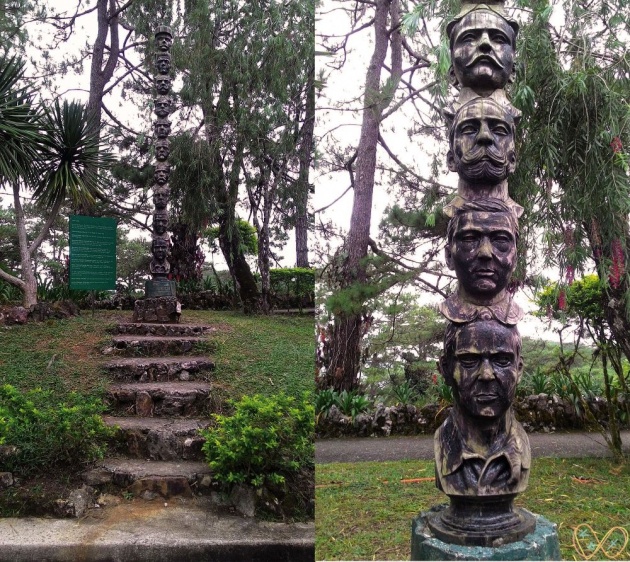
(image source: Katsanslimites)
Totem pole of some important people at the time of American colonization and Japanese occupation in the country.
Opposite the Cemetery of Negativism is the Totem Pole. The totem is composed of ten carved heads of some important people during the American colonization and the Japanese occupation in the Philippines. Included on the Totem Pole were Admiral George Dewey, General Emilio Aguinaldo, President William Howard Taft, Secretary John Milton Hay, William Cameron Forbes, President Theodore Roosevelt, Major General Franklin Bell, Lt. Col. Lyman W. Kennon, Mayor James Halsema, and General Douglas McArthur.
The Totem Pole was carved by Ernesto Dul-ang.
BELL AMPHITHEATER
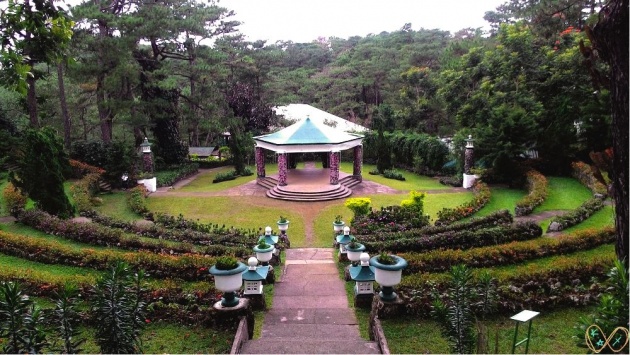
(image source: Katsanslimites)
The Bell Amphitheater.
The Bell Amphitheater is one of the most popular areas at Camp John Hay. It's beautiful design will surely make the visitors to never miss dropping by this gorgeously built amphitheater.
The Amphitheater was designed by Major General Franklin Bell. He also supervised the construction of the Amphitheater which was completed on May 1913. The Bell Amphitheater has a diameter of 300 feet and seating capacity of about 1,500 people.
Did you know that it only cost $1,427 to build the Amphitheater? The price may look cheap now but it was a very huge amount of money back in those times.
The Bell Amphitheater was named after Major General Bell.
(video source: erico padua via Youtube)
Wedding at the Bell Amphitheater.
Due to Bell Amphitheater's unique beauty, it serves as a venue to several important occasions like weddings for example. The peaceful surrounding filled with trees and flowers plus its cool climate, makes it a perfect outdoor venue. Who wouldn't fall in love of this amphitheater anyway?
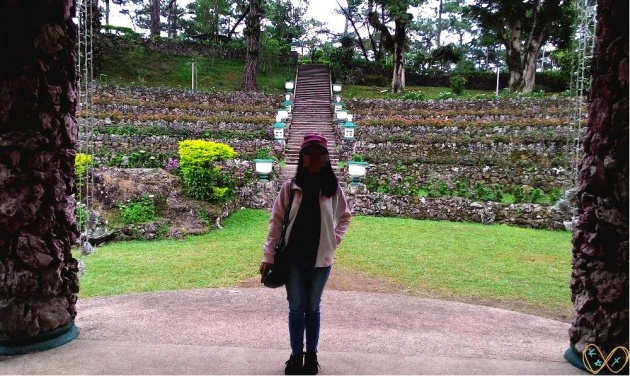
(image source: Katsanslimites)
Inside the gazebo and view from below. Excuse the lady on the photo. (Haha.)
It is also said that when you stood in the middle of the gazebo and speak, your voice will be heard across the entire amphitheater. I, having a soft voice, tried it when I went inside the gazebo. I made my voice a little louder than my usual volume, and yes, it felt like my voice was magnified. It was echoing inside the gazebo and can probably be heard outside too.
I think this place is perfectly beautiful for acoustic shows, declamations, and stuff similar to that. Imagine it's night, lamps are lighted or a bonfire is burning hot against the cold weather, and there you are sitting on the grass listening to a band playing acoustic songs down the gazebo. Such a relaxing night! I would probably die if it was Taka and Toru playing the acoustic songs! (Haha!)
BELL HOUSE
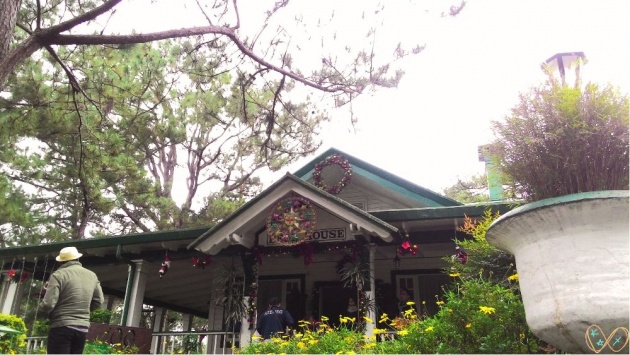
(image source: Katsanslimites)
In front Bell House which was adorned with Christmas decorations last December.
The Bell House was again named after Major General Franklin Bell. It is the commanding general's residence on summer. A fully furnished American house and also has a fireplace which is useful during the much colder weather in Baguio City. We didn't went inside the Bell House since we were already lacking time so I can only write very little information about this historical house.
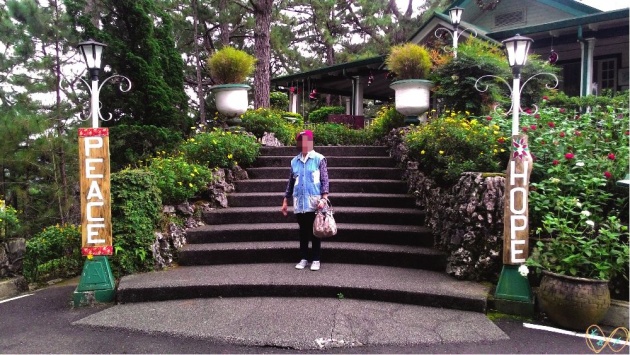
(image source: Katsanslimites)
Stairs leading to Bell House.
Another thing I know is that there is a library inside. This is also one of the reasons why I wanted to visit the Historical Core. But I wasn't able to get inside, sadly, because of lack of time. Today, the Bell House serves as a museum that holds lots of memories from the past of Camp John Hay.
HISTORY TRAIL

(image source: Katsanslimites)
Entrance to History Trail.
Last, is the History Trail. History Trail is a trip down memory lane while being surrounded by tall pine trees which are probably a century old. Pieces of information about the history of Camp John Hay could be read around History Trail. It's appreciating nature and Camp John Hay's history at the same time.
I was only able to stay at the entrance of History Trail as it was already starting to get dark and drizzle. The steps going down were also steep and the tall pine trees were giving me creepy vibes that time. And it seems like I was the only one on the area that moment. My inner coward self was too afraid that I might get lost or encounter some other entities. (Lol.) So I returned upstairs after some time of looking around and taking a few snaps.
LEARNING HISTORY AND APPRECIATING NATURE
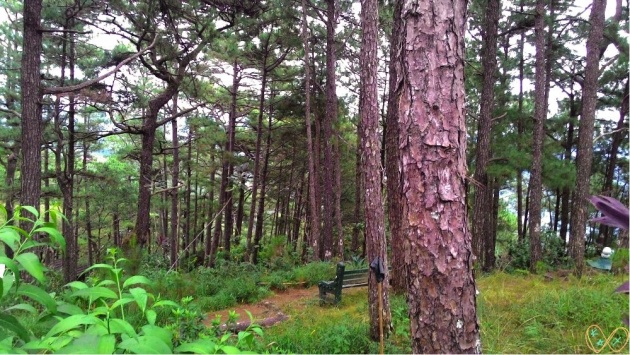
(image source: Katsanslimites)
Tall pine trees at History Trail.
The Historical Core is a must-visit place if you are in Baguio City. It's a peaceful and quiet place with very little crowd. If you want to stay away from the city's noise and crowded streets, this place is definitely one you should consider going to. You get to know the story behind Camp John Hay, release the negative thoughts inside yourself, and surround yourself more with nature. As I've said earlier, Camp John Hay has a wide land area. And while inside, you'll definitely notice lots of trees around which will make you more fall in love with the place. No wonder why the multi-millionaire perfumer, Joel Cruz, had built his mansion called the "White House of the Lord of Scents" inside Camp John Hay.
That's it for my Camp John Hay's Historical Core visit. The Historical Core is a magnificent place and I would love to go back here if given another chance. But next time, I wish I could have more time to see more of Camp John Hay.
Thanks for reading!
✧ Katsanslimites



